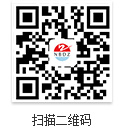China is a large textile producing, consuming and exporting country in the world. It is a large and stable pillar industry sector in the contemporary Chinese national economy. The textile industry not only involves the production and processing of clothing and fabrics, but also the acquisition of agricultural cotton and the final export, etc. The industrial chain is long. The state has implemented a series of tax policies to encourage and support the development of the textile industry.
I. History and development status of the textile industry
Weaving industry, China's larger traditional industry, is a large and stable pillar industry sector in the contemporary Chinese national economy.
China's textile industry has a glorious history of hand-made textile industry. As early as in the Han Dynasty, the developed mulberry production and hand-woven silk industry in the Central Plains, and the “Silk Road” of economic, technological and cultural exchanges between the East and the West, have already carried the ancient Chinese civilization, with exquisite technology and Large-scale production methods of commodities have led many countries in Central Asia, West Asia, Southern Europe, Western Europe and Southeast Asia, and South Asia, and have successively opened up sericulture and silk industry.
The emergence and development of modern machine textile industry in China is subject to the country's poverty and weakness in the past 100 years, and it has been a century in western developed countries. However, after the reform and opening up, with the great attention of the party and the state, they rushed to catch up and later came to the world in a few years. Since the beginning of the 21st century, with the globalization of the economy and China's accession to the WTO, the share of China's textile industry in the world market has further increased. From 2000 to 2015, with developed countries in Europe and the United States as the main market, the annual export volume increased from US$53 billion (15% globally) to US$291.15 billion (37% globally). Correspondingly, the trade surplus of the textile industry increased from US$39.15 billion in 2000 (the total surplus of national import and export trade in the same year was US$24.1 billion) to US$264.6 billion in 2015 (the total surplus of national import and export trade in the same year was US$594.5 billion). The significant role of the textile industry in balancing the balance of payments and increasing foreign exchange reserves in the country has become more apparent.
Second, the industry interpretation
At present, the problem of excessive cost in the textile industry is still outstanding, which includes both production costs and tax costs.
The high cost of domestic electricity in production costs is an important reason. In the case of equipment automation, digitalization, and intelligent water upgrading, and the use of electricity to replace labor, the problem of high electricity prices is more prominent. In this regard, the industry has continuously called on the government to continue to reform the energy system and mechanism, break the monopoly system of the energy industry system, promote the market-oriented reform of the energy industry, establish a mechanism for the formation of the energy price market, and play a decisive role in the allocation of resources in the market, and gradually reduce the energy costs of enterprises. In particular, it promotes direct reduction of electricity prices for enterprises and eases cost pressures.
In terms of taxation costs, although there are many tax incentives, there are not many that can really be enjoyed. For example, the goal of the preferential tax reduction policy is small and micro enterprises, which are already not available to enterprises of a certain scale. Although the preferential policies in Xinjiang are strong, large enterprises are still concentrated in the southeast coastal areas, among which export trade enterprises are not rare. In addition, the “Environmental Protection Tax Law” was officially implemented, and the market rules of “protection of pollution reduction and emission reduction and excessive discharge of pollutants” were established. The environmental protection tax has little impact on the textile industry, especially printing and dyeing, with huge use of water and electricity. The corresponding environmental protection tax has also increased the industry tax burden.
Under this circumstance, the industry has continuously called on the government to continue to promote the reform of the tax system. First, we will further promote the reform of China's taxation system, use the “subtraction” of government revenue, the “addition” of corporate benefits, and the “multiplication” of market vitality. Secondly, we will promote the reform of the tax system structure and the optimization of tax rates, and gradually reduce the VAT rate of various types of real economy dominated by manufacturing industries, and further alleviate the pressure on corporate taxation. Finally, the introduction of more tax incentives, the implementation of accurate tax reduction measures, moderate expansion of tax incentives coverage, the adoption of differentiated taxation measures for the textile industry with strong contribution to employment, increase the tax reduction for small and medium-sized enterprises, and pay close attention to policies Implement, let the policy be implemented, and let the enterprise enjoy the benefits.
Fortunately, on April 1st, it is necessary to reduce the value added tax! Drop two trillion yuan tax cuts! I believe that the textile industry is about to usher in a new spring!
Ningbo Volkswagen Chemical Fiber Industry Co., Ltd. was founded in 1984, with an annual output of 68-1800D polypropylene yarns, PP POY yarns, polypropylene plain yarns, PP FDY yarns 15,000 tons, 1.5D-13D various specifications of polyester staple fibers 25,000 tons Welcome new and old friends to visit us.


 Mr. Chen Fei (Mr.)
Mr. Chen Fei (Mr.) 86-574-63550733
86-574-63550733 86-574-63551022
86-574-63551022 dz@dzfibre.cn
dz@dzfibre.cn



